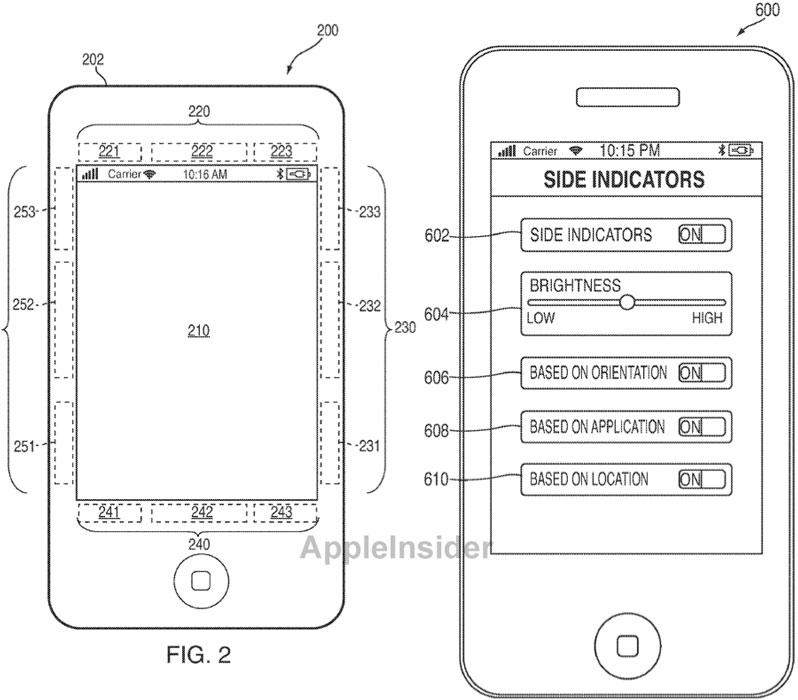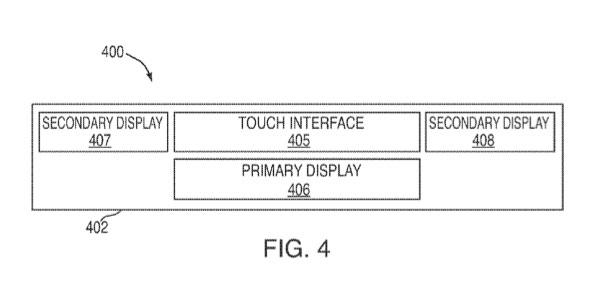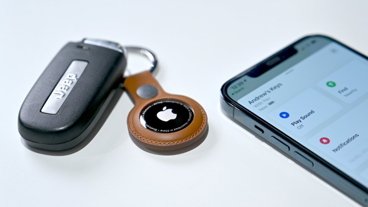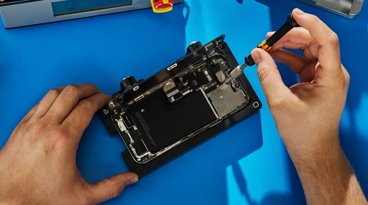Future iPhones, iPads from Apple may add buttons, indicators to bezel
The idea of buttons and indicators on the bezel is described as a "secondary display" in a new patent application published by the U.S. Patent and Trademark Office this week. Apple's proposed invention would include multiple regions on the surrounding bezel of an iPad display, displaying information designed to help users navigate the device.
The application, entitled "Electronic Devices with a Primary Display and a Selectively Illuminated Secondary Display," notes that traditional touchscreen devices must display a virtual button on a touchscreen to show a user where to press. These indicators occupy space on a screen, particularly on a device the size of an iPhone, that could instead be used for displaying visual content.
Apple's solution would have a secondary display around the bezel, which could perhaps be a "printed segmented electroluminescence display." That secondary display could guide a user to providing inputs on the device, or it could act as the inputs themselves with the use of a touch panel.
The secondary display could be selectively illuminated depending on the use of the device. Appropriate graphics and icons would be displayed when users have the ability to select something related to the active application, and the secondary display could also illuminate based on the orientation of the device, whether the user was holding it in portrait or landscape mode.
The application notes that such virtual buttons could be used to control a device without a user's fingers getting in the way. For example, users could control a video game by utilizing touch controls on the bezel of the device, keeping their fingers from obstructing the view of the touchscreen.
The proposed invention made public this week by the USPTO was filed by Apple in October of 2009. It is credited to Gloria Lin, Andrew Hodge, Taido Nakajima, Bruno Germansderfer, and Saumitro Dasgupta.
 Neil Hughes
Neil Hughes












 Andrew Orr
Andrew Orr
 Malcolm Owen
Malcolm Owen

 William Gallagher
William Gallagher

 Mike Wuerthele
Mike Wuerthele
 Christine McKee
Christine McKee








